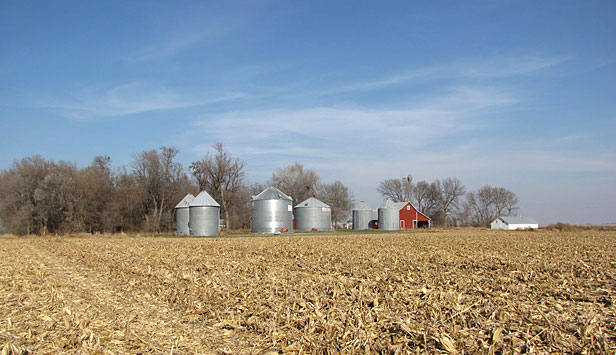Note: This is a guest post by Stephanie Pistello, Ben Evans, and Jeff Biggers, co-founders of the Coal Free Future Project.
In the wake of the worst coal mining disaster in 40 years, compromise and political machinations this spring have resulted in a regulatory crisis of failure; workplace safety in the mines, including the black lung scandal, has emerged as a national tragedy; toxic coal ash remains uncategorized as hazardous waste; mountaintop removal operations and devastating strip mining in 24 states continue under regulatory plunder, not abolishment; billions of taxpayers’ dollars pour down the black hole of carbon capture and storage boondoggles, increasing coal production; climate legislation hangs in the balance of political games.
In 1776, Thomas Paine challenged our country to embrace the cause of independence over compromise. In a moment of crisis, he declared: “We have it in our power to make the world over again.”
Our modern-day Paine, James Hansen at the NASA Goddard Center, has issued a similar clarion call: “Coal is the single greatest threat to civilization and all life on our planet. Our global climate is nearing tipping points.”
It’s time to envision a coal-free future. It’s time for clean energy independence.
We need a road map for a coal-free future. Not a hodge-podge collection of new regulations.
Coal mining, which provides 45 percent of our electricity, will not end tomorrow. Every coal miner deserves a right to a sustainable livelihood; given the legacy of our coal miners, we also believe no coal miner should be displaced from his or her job until we develop clean energy alternatives. This means that coalfield residents, like all Americans, deserve a road map for a feasible transition to clean-energy jobs — including a Coal Miner’s GI Bill for retraining and a massive reinvestment in sustainable economic development in coalfield communities — before we reach a point of no return.
The coalfields should be ground zero for President Obama’s clean energy initiatives, Al Gore’s Repower America, and all green jobs projects.
All coal mining communities know that the first time in 25 years, utilities coal stockpiles have increased during the summer; absentee coal companies are cutting jobs and idling higher-cost mines to keep their stock holders happy in a period of slumping demand; recent U.S. Geological Survey estimates place “peak coal” production as early as 2020.
As grandchildren of black-lung-afflicted coal miners from Kentucky, Illinois, and southwestern Virginia, we honor our families’ sacrifices in recognizing, not denying, the true cost of coal. Our grandfathers benefited from a transition to mechanization to improve mine safety. The time has come for a transition to clean-energy jobs.
Coal is not cheap nor clean; coal has been killing us — for over 200 years. Over 104,000 Americans have died in coal-mining accidents; three coal miners die daily from black-lung disease. Millions of acres of forests and farmlands have been strip-mined into oblivion; pioneering communities have been plundered. Half of Americans live within an hour of a toxic coal ash dump.
The Physicians for Social Responsibility recently found that coal “contributes to four of the top five causes of mortality in the U.S. and is responsible for increasing the incidence of major diseases.”
The National Academy of Scientists totaled costs of coal at more than $62 billion in “external damages” to our health and lives. A West Virginia University report noted the coal industry “costs the Appalachian region five times more in early deaths than it provides in economic benefits.” In Kentucky, according to a Mountain Association of Community Economic Development study, coal may provide $528 million in state revenue, but costs $643 million in state expenditures.
Nothing has motivated our commitment for clean energy more than the tragedy of mountaintop-removal and nationwide strip mining in 24 states. We have seen the devastation of clear-cutting our nation’s great forests and carbon sink of Appalachia and blowing up its oldest mountain range. We have met the casualties of absentee commerce; grieving parents who have lost loved ones to coal slurry-contaminated water; veterans and elderly who endure blasting, fly rock and silica dust; families who have seen their homes washed away in floods caused by erosion; streams poisoned with mining waste; boarded-up communities, strangled by a boom-and-bust single economy.
The plunder of Appalachia and all coalfield communities must end.
More so, with coal-fired plants contributing over 30 percent of our CO2 emissions, everyone’s fate is connected to the coalfields now.
“Clean coal” carbon capture and storage plans are not only chimeras for Big Coal profit, but will ultimately increase coal production by 20-30 percent.
In the end, our fiduciary responsibility to our children demands a new way of generating our electricity in Kentucky and the country. It also affords us a great opportunity for economic and social revitalization
Clean energy independence, not coal, will bring more sustainable jobs.
Wind, solar, hydropower and turbine manufacturing, along with weatherization, retrofitting appliances and homes, could create jobs. The Appalachian Regional Commission found that “energy-efficiency investments could result in an increase of 77,378 net jobs by 2030” in the region.
For us, such a clean energy revolution began with the proposed Smith # 1 coal-fired plant in eastern Kentucky, which was recently set aside. Instead of a costly coal-fired dinosaur, a recent study found that a combination of “energy efficiency, weatherization, hydropower and wind power initiatives in the East Kentucky Power Cooperative region would generate more than 8,750 new jobs for Kentucky residents, with a total impact of more than $1.7 billon on the region’s economy over the next three years.”
Ultimately, this clean energy independence would meet the energy needs of EKPC customers and cost less than the proposed coal plant.
A coal-free future began in Kentucky, in the heartland of our nation’s coalfields. Now it’s time to imagine a coal-free future for the rest of the country.
The writers are co-founders of the Coal Free Future Project.



